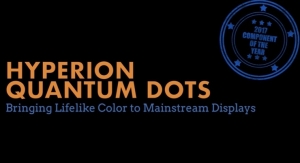Dip Pen Nanolithography (DPN) is a scanning probe lithography technique where an atomic force microscope tip is used to transfer molecules to a surface via a solvent meniscus. This technique allows surface patterning on scales of under 100 nanometres. DPN is the nanotechnology analog of the dip pen (also called the quill pen), where the tip of an atomic force microscope cantilever acts as a "pen," which is coated with a chemical compound or mixture acting as an "ink," and put in contact with a substrate, the "paper."
DPN enables direct deposition of nanoscale materials onto a substrate in a flexible manner.
The transfer of a molecular 'ink' from a coated AFM tip to a substrate was first reported by Jaschke and Butt in 1995. The technique was further developed by a research group at Northwestern University led by Chad Mirkin, who also introduced the term "DPN". The company NanoInk, Inc. holds a patent on Dip Pen Nanolithography, and "DPN" and "Dip Pen Nanolithography" are trademarks or registered trademarks of NanoInk.
Source: Wikipedia
DPN enables direct deposition of nanoscale materials onto a substrate in a flexible manner.
The transfer of a molecular 'ink' from a coated AFM tip to a substrate was first reported by Jaschke and Butt in 1995. The technique was further developed by a research group at Northwestern University led by Chad Mirkin, who also introduced the term "DPN". The company NanoInk, Inc. holds a patent on Dip Pen Nanolithography, and "DPN" and "Dip Pen Nanolithography" are trademarks or registered trademarks of NanoInk.
Source: Wikipedia














